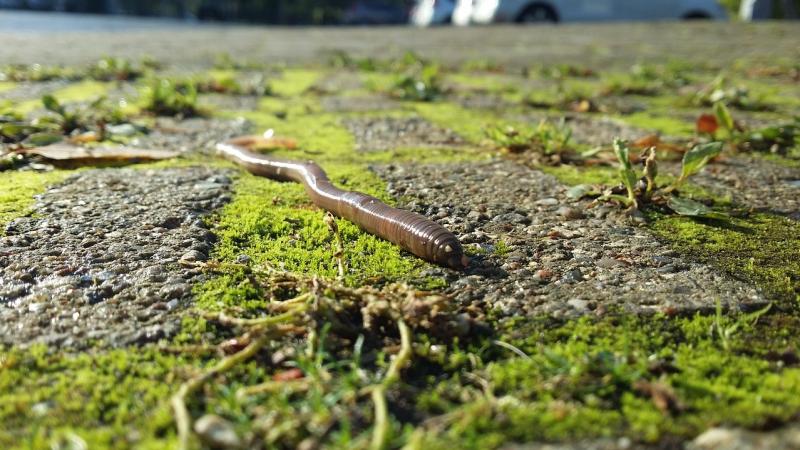
Carbon content in the soil is often used as an indicator of its richness in nutrients as carbon is essential for the healthy growth of plants. One way to increase soil nutrients is to use earthworms that feed on decaying organic matter in the soil. In a study, S. N. Sruthi and Prof. E. V. Ramasamy from the School of Environmental Sciences, Mahatma Gandhi University, Kottayam, report that the diversity of earthworms enriches the carbon content of the soil. The study was published in the journal Nature Communications and funded by Kerala State Council for Science, Technology, and Environment.
The researchers of the study spent twelve months observing the changes in the soil with and without earthworms. They marked out three plots of land, measuring 1 metre by 1 metre, in Jeevaka Live Laboratory—an area in the university campus with naturally varied vegetation and minimal human interference.
In the first plot, the researchers introduced about 100 earthworms of a native species and regularly fed water and cattle dung to the soil. They also fenced it with nylon mesh to a depth of 1 metre into the soil on all four sides to prevent the earthworms from migrating to the neighbouring plots. In the second plot, they added only water and dung and left the third plot as is. They then compared the changes in the biodiversity of earthworms and the properties of the soil over time of the three plots with three other plots of the same size outside Jeevaka lab in an area with a lot of human interference.
The researchers collected soil samples before beginning the experiment and once every three months afterwards. Soil organic matter acts as an essential reserve of plant nutrients in the soil and helps to retain more water. The results of the study found that both, the amount of organic matter and organic carbon, increased in all the three plots. The second plot, fed with just water and dung, showed the highest increase in these two quantities.
The researchers attribute this finding to the presence of more number and diversity of earthworms in the plot. “A majority of the earthworms in the first plot were the introduced species. Even though this plot received the same supplements, the nylon mesh might have restricted the entry of different varieties of earthworm”, they speculate. The earthworm diversity also influences the number of stable carbon particles available in the soil, which can stay in the soil for a decade or longer, the study found. The second Jeevaka plot showed the highest increase of about 50% in this quantity when compared to the other two Jeevaka plots. The three non-Jeevaka plots showed only about a 9% increase.
Besides, the presence of different types of earthworms also leads to increased microbial activity. In all six plots, there was an increase in the carbon content available from bacteria and fungi, which decompose the organic matter in the soil and release carbon dioxide needed for the plants. The second Jeevaka plot, which had the most diversity of earthworms, also showed the highest increase in microbial activity, which in turn increased the amount of easily decomposable carbon particles.
“Different types of microbial groups and their activity can enrich the soil with more carbon than a single group can”, add the researchers.
Earthworms lump together the carbon and organic particles decomposed by the microbes which make them last longer in the soil. Despite the increased consumption of carbon by the microbes in the second plot, it has better carbon content in the long term due to this interaction between the earthworms and microbes. “The diversity of earthworms influences the microbial activity in the soil, which in turn results in better carbon content in the soil. This can be further enhanced by regularly providing water and feed such as cattle dung”, say the researchers.
This study is the first to report an experiment exploring the role of earthworms in maintaining the carbon cycle in Indian soil. “The activity of a diverse group of earthworms can help the farmers sustain long-term stability of carbon in the soil without resorting to the use of chemical fertilizers”, conclude the researchers, talking about the implications of their findings.






